BY DEFENCE JOURNALIST SAHIL | T.I.N. NETWORK
Indian Army Set for Major Modernisation Boost: 4.25 Lakh CQB Carbines to be Inducted Within a Year, ‘Bhairon’ and ‘Ashni’ Battalions to Redefine Future Warfare
New Delhi | October 23, 2025 —
In a major stride towards modernisation and self-reliance, the Indian Army is gearing up for one of the largest-scale weapon inductions in recent years. Over the next twelve months, the Army is set to receive 4.25 lakh Close Quarter Battle (CQB) carbines, alongside the operational raising of ‘Bhairon’ battalions and ‘Ashni’ drone battalions, marking a decisive transformation in India’s tactical and technological warfighting capability.
According to senior Army officials, including Lieutenant General Ajay Kumar, Director General of Infantry, this sweeping upgrade will substantially enhance the Army’s close combat proficiency, multi-domain readiness, and unmanned warfare capabilities. The comprehensive plan signals the Army’s clear focus on speed, agility, and indigenous innovation under the “Atmanirbhar Bharat” (self-reliant India) framework.
4.25 Lakh CQB Carbines: Strengthening Close Combat Power
The new CQB carbines are designed to empower Indian soldiers with faster response, improved accuracy, and high lethality in urban and close-quarter environments — scenarios increasingly relevant in modern asymmetric warfare.
Of the total 4.25 lakh carbines to be inducted, 60% will be manufactured by Bharat Forge in collaboration with DRDO’s Armament Research and Development Establishment (ARDE), while 40% will be procured from PLR Systems, a joint venture involving the Adani Group. The contract for this massive supply was finalised last month, with production lines expected to begin full-scale output within the next few months.
Army sources confirm that the weapon will undergo rigorous field trials across various terrains — from desert and mountain sectors to urban combat simulators — before being deployed across all major infantry units. The induction of these carbines will finally fill a long-standing gap in the Army’s close-quarter combat inventory, replacing legacy systems with faster-firing, modular, and indigenously supported platforms.
‘Bhairon’ Battalions: Bridging the Gap Between Infantry and Special Forces
In a parallel move, the Indian Army has also begun the formation of 5 new ‘Bhairon’ battalions, a concept that aims to bridge the operational gap between Ghatak Commandos and Special Forces. These units will serve as rapid-response, high-intensity combat elements capable of handling urban warfare, cross-border skirmishes, and hybrid threat environments.
The training for the first batch of Bhairon battalions began on October 1 and will continue through October 31, focusing on integrated combat tactics, high-mobility operations, and multi-domain engagement. Defence Minister Rajnath Singh is expected to visit Jodhpur later this month to review their live demonstration and operational readiness.
Each Bhairon battalion will consist of approximately 250 soldiers, carefully selected not only from infantry units but also from Artillery, Signals, and Air Defence formations — ensuring that these new battalions possess true multi-domain combat capabilities.
The Army plans to expand this initiative to 25 Bhairon battalions within the next six months, creating a powerful network of hybrid combat units positioned across critical operational sectors.
‘Ashni’ Battalions: India’s First Fully Drone-Based Combat Units
In what is being described as a historic leap into unmanned warfare, the Indian Army is also raising 380 ‘Ashni’ (Fire) battalions, dedicated exclusively to drone-based warfare and autonomous mission execution.
Each Ashni battalion will include around 20 trained drone operators, proficient in surveillance, reconnaissance, and kamikaze (loitering munition) operations. These units will act as the Army’s eyes and precision strike tools in the sky — capable of conducting real-time intelligence gathering, target identification, and precision engagement deep inside enemy territory.
This initiative aligns with the Army’s broader push for AI-driven, unmanned, and network-centric warfare, where human soldiers and autonomous systems operate in seamless synergy. The creation of such dedicated drone battalions will not only bolster battlefield awareness but also reduce risk to human life during high-risk operations.
A senior Army source described the Ashni concept as “the dawn of the Indian Army’s unmanned combat doctrine,” noting that its integration will give India a significant tactical edge in both defensive and offensive operations.
Driving the Vision: Indigenous Power and Technological Transformation
The combined induction of CQB carbines, the formation of Bhairon battalions, and the establishment of Ashni drone units collectively represent a dramatic evolution in India’s military doctrine. These initiatives illustrate how the Army is moving beyond traditional warfare models to embrace technology, versatility, and real-time intelligence as core components of future conflicts.
Officials emphasise that these developments are part of a broader modernisation blueprint aimed at achieving “maximal readiness with minimal external dependency.” With Bharat Forge, DRDO, and PLR Systems leading indigenous weapon production, and Indian startups contributing to drone and AI development, the defence ecosystem is witnessing unprecedented integration of public and private innovation.
This transformation aligns with India’s Integrated Theatre Command roadmap, ensuring that future battlefield engagements — across land, air, and cyber domains — are coordinated, data-driven, and decisively Indian in character.
A Future-Ready Army for the Next Generation of Warfare
As global battlefields evolve towards hybrid and autonomous warfare, the Indian Army’s modernisation pace underscores its commitment to staying ahead of the curve. The induction of advanced carbines will strengthen the soldier’s individual lethality, while Bhairon and Ashni battalions will redefine how collective combat operations are executed — blending human skill with cutting-edge technology.
The next one year, therefore, will be a defining phase for India’s ground forces, marking a transition from conventional strength to smart, networked, and self-reliant warfighting capability. From the deserts of Rajasthan to the mountains of Ladakh, these changes will significantly enhance the Army’s ability to respond swiftly and decisively to any threat, external or internal.
In essence, the modern Indian soldier of 2026 will be faster, better equipped, and technologically empowered — standing as the embodiment of a new-age military force built on strength, precision, and innovation.
BY DEFENCE JOURNALIST SAHIL | T.I.N. NETWORK
भारतीय सेना का बड़ा आधुनिकीकरण अभियान: अगले एक वर्ष में मिलेंगे 4.25 लाख CQB कार्बाइन, ‘भैरों’ और ‘अश्नि’ बटालियन बनाएंगी भविष्य के युद्ध की नई परिभाषा
नई दिल्ली | 23 अक्टूबर 2025 —
भारतीय सेना अपने इतिहास के सबसे बड़े आधुनिकीकरण अभियानों में से एक की ओर अग्रसर है। आत्मनिर्भर भारत (Atmanirbhar Bharat) के दृष्टिकोण को साकार करते हुए, सेना अगले बारह महीनों में 4.25 लाख क्लोज क्वार्टर बैटल (CQB) कार्बाइन हासिल करने जा रही है। इसके साथ ही, सेना में ‘भैरों’ बटालियन और ‘अश्नि’ ड्रोन बटालियन का गठन भी किया जा रहा है, जो भारत की सामरिक और तकनीकी युद्ध क्षमता में एक ऐतिहासिक बदलाव का संकेत है।
लेफ्टिनेंट जनरल अजय कुमार, महानिदेशक (डीजी) इन्फेंट्री ने बताया कि यह कदम सेना की क्लोज कॉम्बैट क्षमता (Close Combat Capability), मल्टी-डोमेन ऑपरेशन रेडीनेस, और अनमैन्ड (Unmanned) वॉरफेयर कैपेबिलिटी को कई गुना बढ़ा देगा। इस योजना से यह स्पष्ट होता है कि भारतीय सेना अब पारंपरिक युद्ध संरचनाओं से आगे बढ़ते हुए गति, सटीकता और स्वदेशी तकनीक के मिश्रण पर जोर दे रही है।
4.25 लाख CQB कार्बाइन: नजदीकी युद्ध क्षमता को नई धार
सेना में शामिल होने जा रही ये नई CQB कार्बाइन भारतीय सैनिकों को शहरी और नजदीकी युद्ध परिस्थितियों में तेज़ प्रतिक्रिया, अधिक सटीकता और घातक मारक क्षमता प्रदान करेंगी। आधुनिक असममित (Asymmetric) युद्धों में ऐसी हथियार प्रणालियाँ अत्यंत आवश्यक हैं, जहां गति और सटीकता ही जीत का निर्धारक कारक होती हैं।
कुल 4.25 लाख कार्बाइन में से 60 प्रतिशत ‘भारत फोर्ज’ द्वारा डीआरडीओ (ARDE) के सहयोग से तैयार की जाएंगी, जबकि 40 प्रतिशत की आपूर्ति पीएलआर (PLR Systems) — अदाणी समूह से जुड़ी संयुक्त इकाई — द्वारा की जाएगी। इस सौदे पर पिछले महीने हस्ताक्षर हो चुके हैं, और आने वाले महीनों में उत्पादन कार्य प्रारंभ हो जाएगा।
सेना सूत्रों के अनुसार, इन कार्बाइनों का विभिन्न इलाकों — रेगिस्तानी, पर्वतीय और शहरी क्षेत्रों में कठोर परीक्षण किया जाएगा। इसके बाद ही इन्हें सभी प्रमुख इन्फेंट्री इकाइयों में शामिल किया जाएगा। इन हथियारों की इंडक्शन के बाद भारतीय सेना के नजदीकी युद्ध के लिए आवश्यक हथियारों की दशकों पुरानी कमी पूरी हो जाएगी। ये कार्बाइन पुराने हथियारों की जगह लेकर एक तेज़, मॉड्यूलर और पूरी तरह स्वदेशी समर्थन वाली प्रणाली स्थापित करेंगी।
‘भैरों’ बटालियन: घातक कमांडो और स्पेशल फोर्सेज के बीच कड़ी
भारतीय सेना ने समानांतर रूप से 5 नई ‘भैरों’ बटालियन भी तैयार की हैं। इनका उद्देश्य घातक कमांडो (Ghatak Commandos) और स्पेशल फोर्सेज (Special Forces) के बीच की सामरिक क्षमता के अंतर को पाटना है। ये बटालियनें तेज प्रतिक्रिया, उच्च तीव्रता वाले अभियानों और बहु-क्षेत्रीय युद्धों के लिए प्रशिक्षित की जा रही हैं।
भैरों बटालियनों का पहला प्रशिक्षण सत्र 1 अक्टूबर से 31 अक्टूबर तक चल रहा है। इस दौरान सैनिकों को इंटीग्रेटेड कॉम्बैट टैक्टिक्स, हाई-मोबिलिटी ऑपरेशंस और मल्टी-डोमेन एंगेजमेंट का प्रशिक्षण दिया जा रहा है।
सूत्रों के अनुसार, रक्षा मंत्री राजनाथ सिंह इस महीने के अंत में जोधपुर पहुंचकर इन बटालियनों के प्रशिक्षण और लाइव डेमोंस्ट्रेशन को देखने वाले हैं।
प्रत्येक भैरों बटालियन में लगभग 250 सैनिक होंगे, जिनका चयन केवल इन्फेंट्री से नहीं, बल्कि आर्टिलरी, सिग्नल्स और एयर डिफेंस यूनिट्स से भी किया जा रहा है। यह मॉडल इन बटालियनों को मल्टी-डोमेन कॉम्बैट फोर्स के रूप में स्थापित करेगा।
सेना आने वाले छह महीनों में कुल 25 भैरों बटालियन तैयार करने की योजना बना रही है, जो देशभर के प्रमुख सामरिक इलाकों में तैनात होंगी। इन बटालियनों को “इंडियन आर्मी की क्विक हिटिंग स्ट्राइक फोर्स” कहा जा रहा है, जिनका उद्देश्य सीमित समय में अधिकतम प्रभाव पैदा करना होगा।
‘अश्नि’ (फायर) बटालियन: भारत की पहली पूर्ण ड्रोन-आधारित कॉम्बैट यूनिट
भारतीय सेना अब मानव रहित युद्ध प्रणालियों की दिशा में एक ऐतिहासिक कदम उठा रही है। सेना ने 380 ‘अश्नि’ (Fire) बटालियनों का गठन शुरू किया है, जो पूरी तरह ड्रोन-आधारित ऑपरेशन्स पर केंद्रित होंगी।
हर अश्नि बटालियन में लगभग 20 प्रशिक्षित ड्रोन ऑपरेटर होंगे, जो सर्विलांस (निगरानी), रिकॉनिसेंस (टोही मिशन) और कामिकाजे (आत्मघाती) ड्रोन ऑपरेशन्स में विशेषज्ञ होंगे। ये यूनिट्स सेना की आंखों और हथियार दोनों के रूप में कार्य करेंगी — जो रीयल-टाइम इंटेलिजेंस, टारगेट आइडेंटिफिकेशन और प्रिसिजन स्ट्राइक (सटीक प्रहार) करने में सक्षम होंगी।
अश्नि बटालियनों का उद्देश्य युद्धक्षेत्र में AI (Artificial Intelligence) और Unmanned Systems के संयोजन को सशक्त बनाना है, जिससे मानव सैनिक और मशीन एक साथ समन्वयित तरीके से ऑपरेशन कर सकें।
एक वरिष्ठ सैन्य अधिकारी ने बताया, “अश्नि बटालियन भारतीय सेना के मानवरहित युद्ध सिद्धांत की शुरुआत है। आने वाले वर्षों में यह हमारे ऑपरेशनल स्ट्रक्चर का महत्वपूर्ण हिस्सा बनेंगी।”
इन बटालियनों की स्थापना भारत को न केवल सामरिक लाभ देगी बल्कि सीमित समय में सटीक आघात करने की क्षमता भी सुनिश्चित करेगी।
स्वदेशी शक्ति और तकनीकी रूपांतरण की दिशा में निर्णायक कदम
CQB कार्बाइन की इंडक्शन, भैरों बटालियनों का गठन और अश्नि ड्रोन यूनिट्स की स्थापना — ये सभी कदम भारतीय सेना के नए सैन्य सिद्धांत (New War Doctrine) को परिभाषित करते हैं। सेना अब पारंपरिक युद्ध मॉडलों से आगे बढ़कर टेक्नोलॉजी, वर्सेटिलिटी और रीयल-टाइम इंटेलिजेंस को युद्ध का मूल हिस्सा बना रही है।
सेना अधिकारियों के अनुसार, ये सभी योजनाएँ उस व्यापक आधुनिकीकरण ब्लूप्रिंट का हिस्सा हैं जिसका उद्देश्य है — “अधिकतम तत्परता, न्यूनतम निर्भरता”।
भारत फोर्ज, डीआरडीओ और पीएलआर सिस्टम्स जैसे औद्योगिक भागीदारों के नेतृत्व में स्वदेशी हथियार निर्माण को नई रफ्तार मिल रही है, वहीं भारतीय स्टार्टअप्स एआई, ड्रोन और रोबोटिक सिस्टम्स के क्षेत्र में क्रांतिकारी बदलाव ला रहे हैं।
यह परिवर्तन भारत के इंटीग्रेटेड थिएटर कमांड (Integrated Theatre Command) के रोडमैप से भी जुड़ा है, जिसके तहत भूमि, वायु और साइबर — तीनों डोमेन के युद्ध एकीकृत और डेटा-आधारित रणनीति से संचालित होंगे।
युद्ध के नए युग के लिए तैयार भारतीय सेना
दुनिया भर में युद्ध की प्रकृति अब हाइब्रिड, स्वचालित और नेटवर्क-केंद्रित (Network-Centric Warfare) होती जा रही है। ऐसे में भारतीय सेना की आधुनिकता की यह गति यह साबित करती है कि भारत आने वाले समय की चुनौतियों के लिए पूरी तरह तैयार है।
नई CQB कार्बाइन से सैनिकों की व्यक्तिगत मारक क्षमता बढ़ेगी, जबकि भैरों और अश्नि बटालियनों से समूह आधारित ऑपरेशन्स में मानव कौशल और तकनीक का अद्भुत संगम देखने को मिलेगा।
आने वाला एक वर्ष भारतीय सेना के लिए रणनीतिक रूपांतरण का कालखंड होगा — जब वह पारंपरिक शक्ति से आगे बढ़कर स्मार्ट, नेटवर्क-सक्षम और आत्मनिर्भर युद्ध शक्ति के रूप में उभरेगी।
राजस्थान के रेगिस्तान से लेकर लद्दाख की पहाड़ियों तक, इन नई बटालियनों और हथियार प्रणालियों से सेना की युद्धक क्षमता और तत्परता में अभूतपूर्व वृद्धि होगी।
संक्षेप में कहा जाए तो 2026 का भारतीय सैनिक — तेज़, तकनीकी रूप से सशक्त और आत्मनिर्भर होगा। वह केवल सीमा का रक्षक नहीं, बल्कि भारत की नवयुगीन सैन्य शक्ति का प्रतीक बनेगा — शक्ति, सटीकता और नवाचार का संगम।

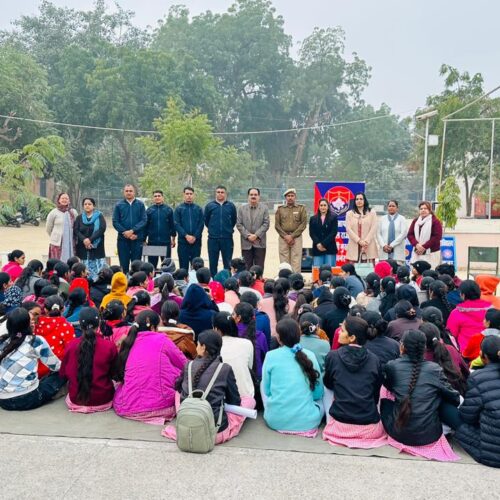

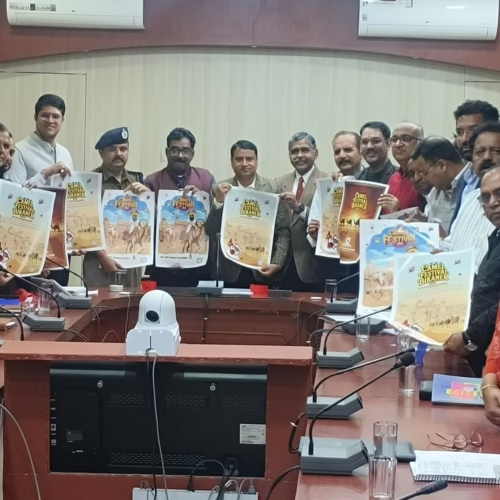

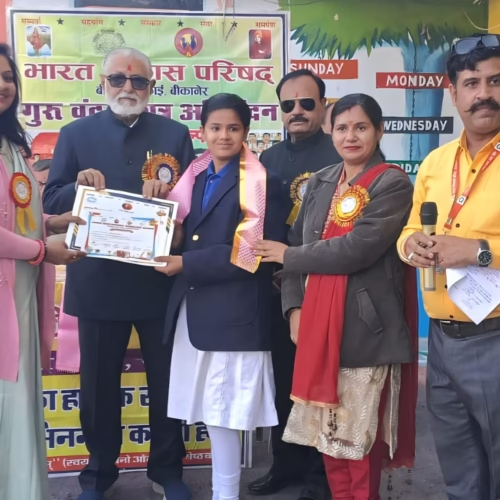


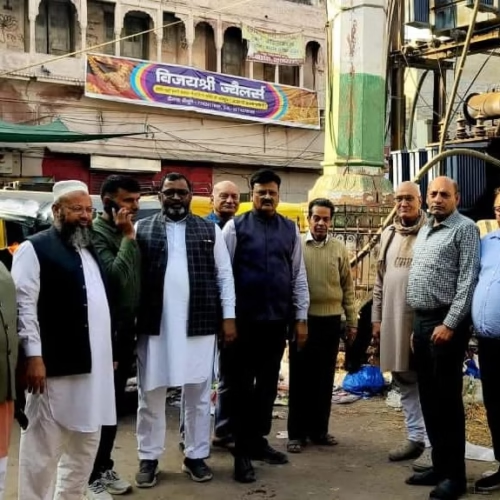

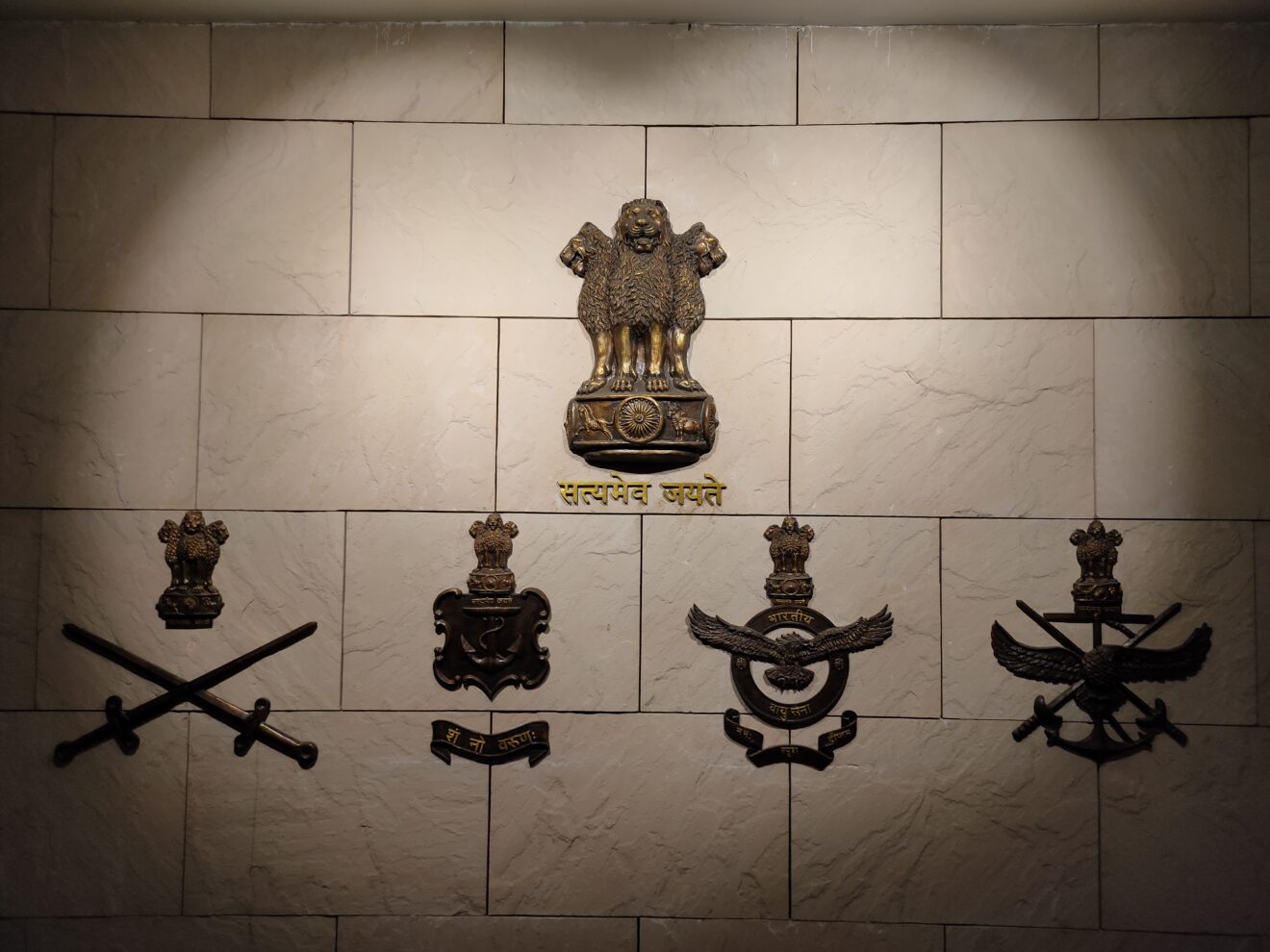




Add Comment